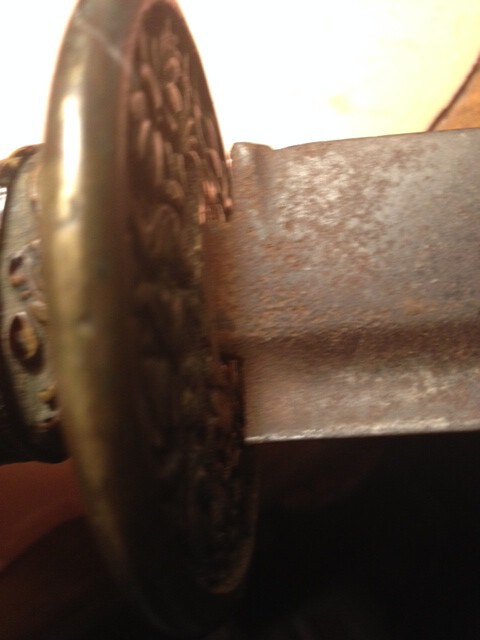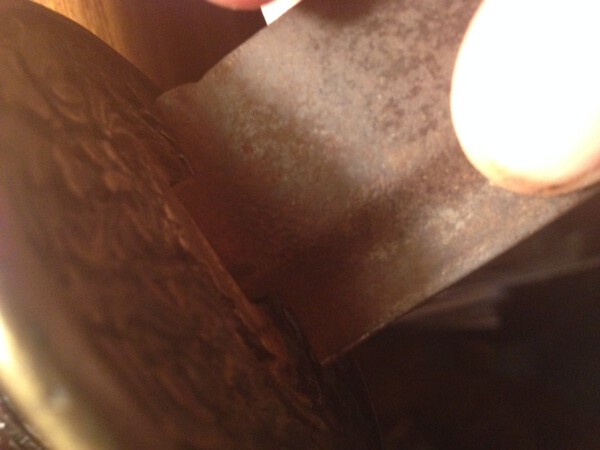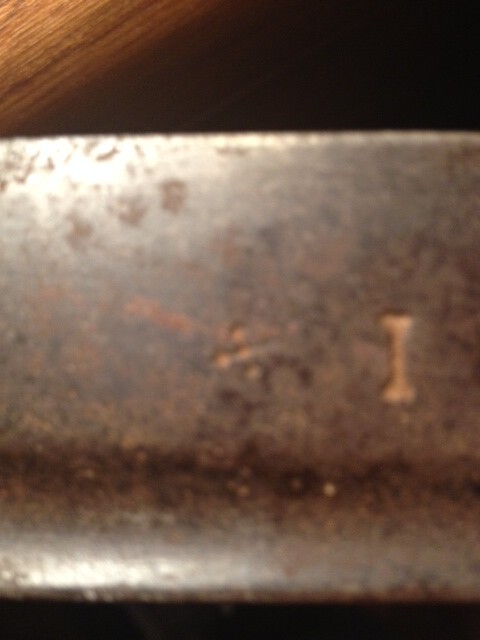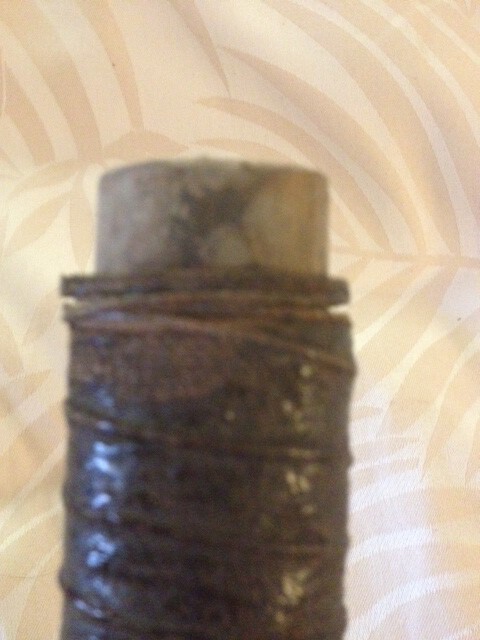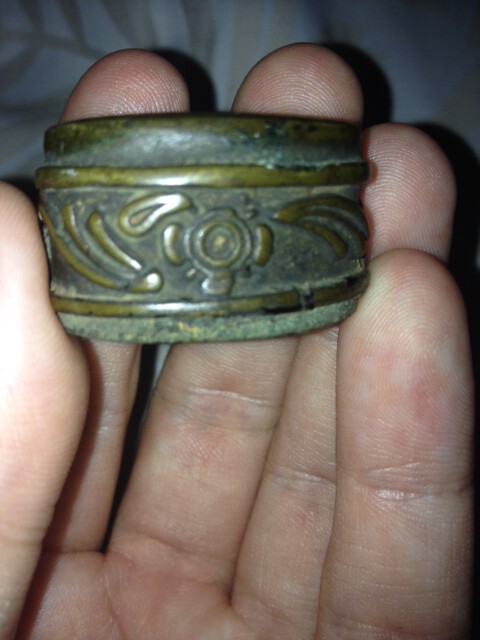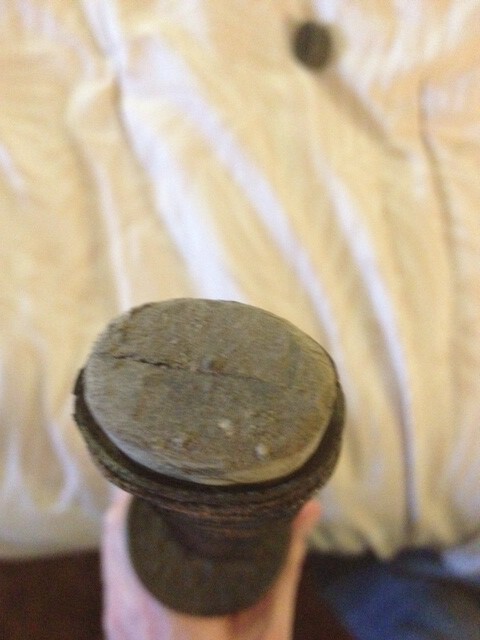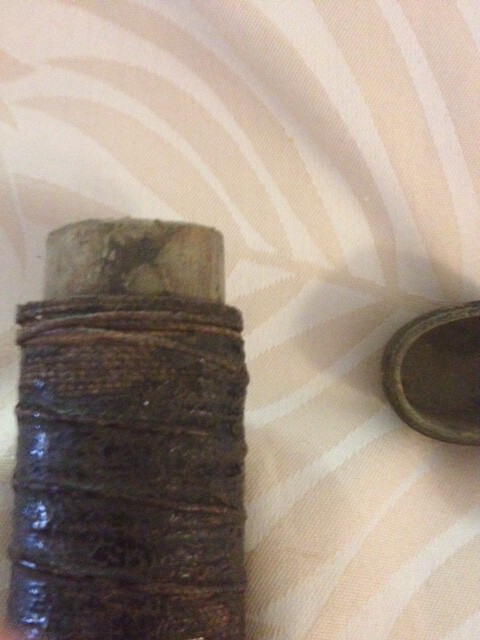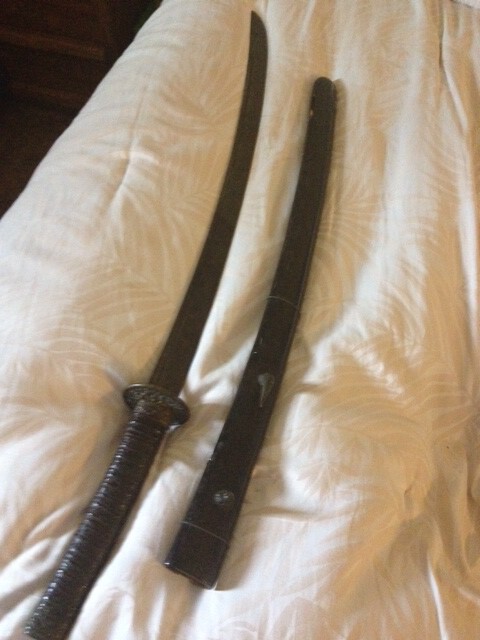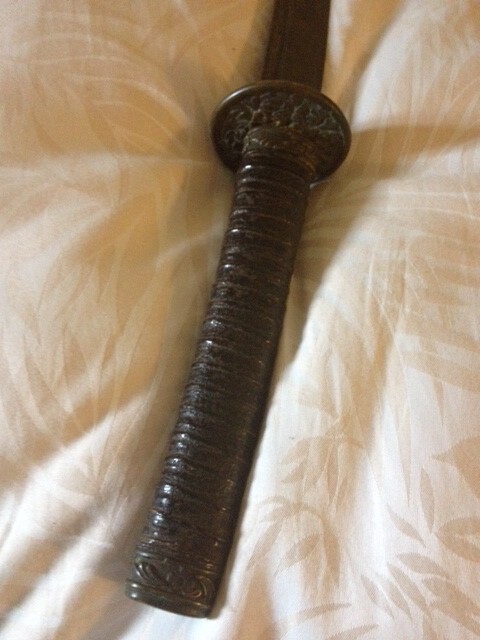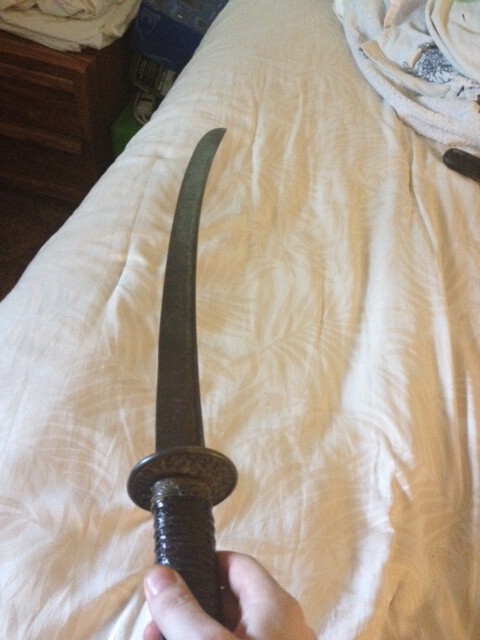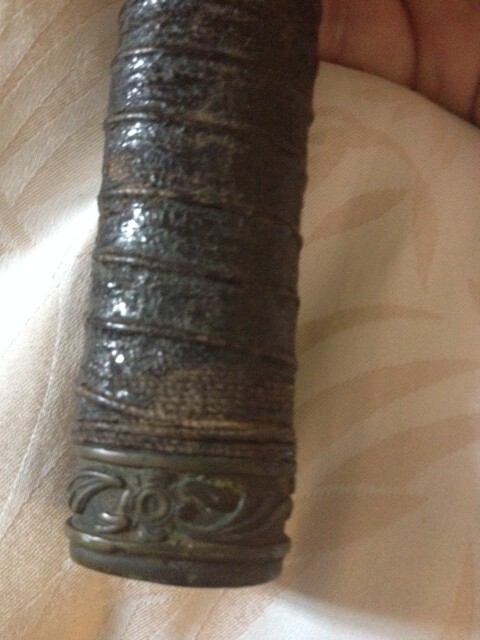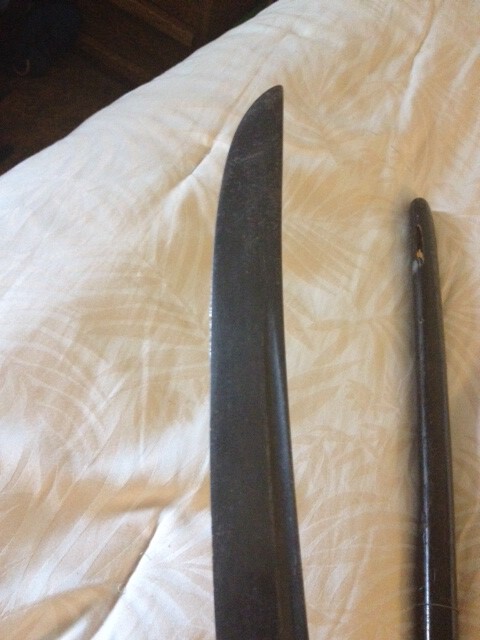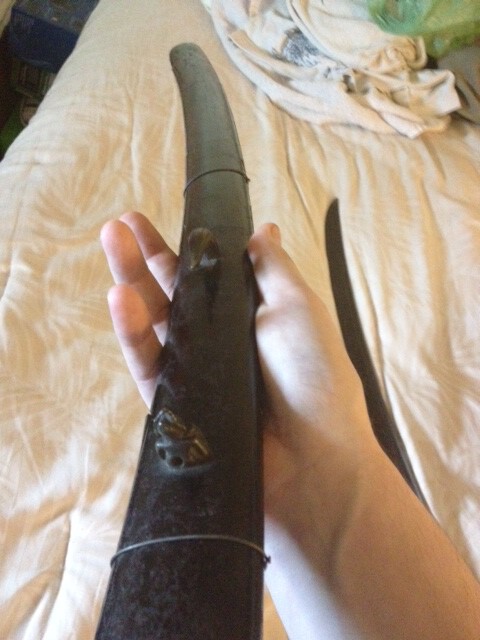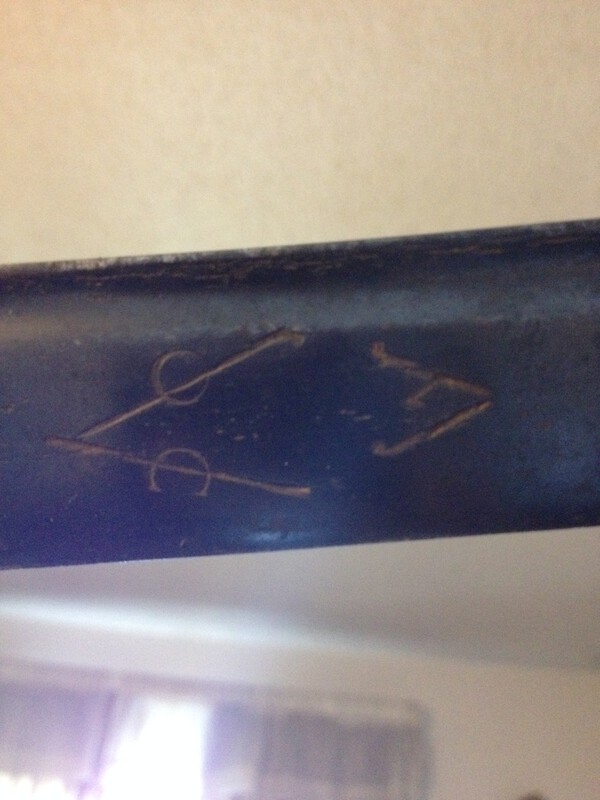
medar1
Members-
Posts
16 -
Joined
-
Last visited
medar1's Achievements
-
The sword (in my life at least) will never leave the family as I believe it belongs as an heirloom and I have always been big on keeping things that mean something to a bloodline. Out of curiosity though, just how rare and precious are swords with this clash of cultures would you gauge? To me it is priceless as nothing can ever replace something like this and the history I am currently hunting. Your historic information is really interesting by the way and I appreciate it. Since my first post on this I have put a lot of time into this and surprisingly the information is not as easy to come by as you would think for something from 1756. It feels like I am looking for something from 1600 BC with the lack of solid information out there and you would think the VOC would have had detailed records of all their hardware but even in the manifests I have and the VOC - A - manifests it's very low end as far as detailed information.
-
First off, thank you for your time. To go further on your statement: Today I received this message, Dear Chris, Thank you friendly for your question with the images included. Maybe you also you consult the above museumsites; they are two museums in the Netherlands specialised on ethnology. And the third one is the Rijksmuseum in Amsterdam. In hope I helped you in this way and with best regards, Joyce Edwards medewerker E-cultuur, afd fotografie & documentatie So it would seem your opinion is shared by others too. I also received this from Stanford: Hello Chris, Unfortunately, our history faculty were not able to provide additional information for the sword. You may want to try contacting a curator at the Cantor Arts Center. They may be able to provide you with more information. http://museum.stanford.edu/index.html Good luck! I hope you find the information you have been looking for. Kind regards, Priscilla The mystery and hunt continues my friends!
-
Just an update guys: I emailed the University of Copenhagen (among many other places) and they have emailed me copies of the VOC shipping manifests from 1756 onward (and will send prior if I need). I came up with this idea last night with the hope that in one of these will detail where and to whom exactly the blade was headed. From my research, which guys, was 14 hours yesterday (seriously) I have discovered a few startling and agreed upon things when it came to the VOC: 1) When they gifted the blade it was always to some big wig type. In essence it was a "We are now trading partners with you, here is a gift to celebrate it" type of offering. 2) That original smith in San Francisco (whom I contacted today but had since passed) stated he felt the "sword" reminded him of something similar to the associates of "Tokugawa Yoshimune". I posted this in my first message but didn't consider it after it seemed to be "untrue". However, Yoshimune was the Shogun of Japan during that time period and his history shows he altered the more strict policy of his predecessor with the Dutch. My point is perhaps the smith actually did know the design of the art and that is what he was getting at when he said it reminded him of it. His English wasn't very good. I am not saying it has any association but rather that given the time period, the VOC policy of gifting the big wig and the fact Yoshimune basically opened house for trade it (from a business standpoint) makes sense. (EDIT - Yoshimune died in 1751 so this cannot be true) - However: "The Dutch East India Company missions to Edo were regular tribute missions to the court of the Tokugawa Shogun in Edo (modern Tokyo) to reassure the ties between the Bakufu and the Opperhoofd. The Opperhoofd of the Dutch factory in Dejima and his attendants were escorted by the Japanese to Edo where they presented exotic and elaborate gifts to the Shogun:clocks, telescopes, medicines, artillery and rare animals were usual gifts of the tribute missions.[1] The Shogun would correspond at the same time with gifts to the Dutch. The tribute system as in China, served to enhance the idea of the Shogun's supremacy to his subjects." 3) As Curran said, and I have heard repeated time after time on the other forums is that the sword is a "clash" (basically exactly how you stated it) which is something never seen before by anyone else. However, you guys just keep providing amazing intelligence that is really helping. It really does appear I was fortunate I stumbled upon this site because the sword in total does have a clash of several different things. Also: I know this is a sword site, however, if you guys are interested and want to see the other items my family picked up through the centuries from Japan I would be happy to post them just let me know. Nanban, etc.
-
Mission accomplished, that really does pump me up. Talk about a turn of events from 20 years of thought. I had never even heard of VOC weapons (which isn't saying a lot as I never even looked into it) and surely never knew they were rare. The more I read about these VOC - A swords the more it appears they were decorative gifts for specific people. So, yes, perhaps it was gifted to that family in Japan from the VOC itself (that actually would make sense).
-
Do you believe that a sword (this one in this particular case) that is created outside of Japan could be unique in terms of what we are seeing? Better stated, is that plausible considering we cannot find something similar to it from that time frame and location? I simply cannot find anything matching the design, shape, age range (I have exhausted the 1700's it feels like) and and visuals. I guess what I am asking is (and I apologize if this is the wrong website) if it is plausible that this sword was created with this specific design and everything therein to match whatever the VOC owner wanted, he went to Japan at some point (or the area), it was taken in some form, and thus from there it the story goes? It just seems so far fetched and when I think of beauty in swords I think of Japan so I had never considered the possibility of anything else. I just have been combing google and websites for hours since you guys turned me on to the VOC and simply cannot find anything even remotely like it from that time period so I am asking myself "is this thing one of a kind and the smith who forged it was attempting to copy something but failed?"
-
What a fantastic rundown. I am truly grateful for all that has been said and explained to me on this site. I, absolutely, understand (and respect) why your viewers and those who participate would be irritated by both deception and liars who (I assume) flood this forum regularly. For me, I can't really put it into an intelligent statement but suffice to say, I am not an adult and the history of the sword has, honestly, been a fascination of mine since I was a child. I used to ask him constantly if I could see it and such when I was young. You are correct about the "sword smiths". They were creators of the style (to my understanding) so I shouldn't have said "experts". I simply am ignorant to the language, lingo and everything therein in relation to the beautiful design and art on sword creation and study and am trying my best to educate myself as history is and has always been an interesting pastime of mine and the sword creates a chance for me to delve back to see if I can discover its origin, story, and such. I purchased a type of shadow box for him to place it in (it will eventually pass to me) that was quite expensive and hardened so the world cannot damage it but, again, as I am ignorant to all of this and couldn't find any true expert, the process has been difficult to say the least. I feel I got very lucky finding this site and the help I have received has been more than ten years of (here and there) research. I would have never thought about a European organization considering the words said by the Japanese man and where my Grandfather obtained it and, you're right, I have always (until today) thought it was Japanese in origin based both on who was carrying it during WW2 and what nationality he was (not to mention my basic comparisons of pictures). Again, thank you all for your time, consideration and everything therein and if you think of anything else, I would be extremely grateful. M
-
Thank you for your help and direction. I know most people would be disappointed but I am ecstatic. For me this is a scavenger hunt back through time. I know it may seem like BS but my Grandfather really was an honest (ridiculously really) man so I do believe the story about him getting it from the Officer because I also have his service record booklet which includes "contraband" and as he was the Commander of a ship, he was very detailed. I bring that up because, let's say for a moment that it is a variation. Then the next question I ask myself is why the Japanese Officer had it, why he said it had been in his family (I read the Japanese letter he sent my Grandfather to thank him years later - can post if you guys wish), and why a variation sword with the Indies Trading CO symbol would be on a Japanese Officer on Okinawa in the first place (I was under the impression they had their own swords). You really helped me today John and I will be making a donation as an expert should be paid for his time and consideration in my view and I believe in that fully. If you have any further insight, or anyone else does, please let me know because this truly is fun for me. M
-
I don't know if this will help, John, but I tried (I just am fearful of damaging it). Couple things I should add. a) The blade in totality is magnetic. b) The brownish/gold looking material (Idol on sheath, hilt around blade, and end piece) is NOT magnetic (not at all and we tried a strong one and weak one) - I believe it is bronze as it isn't rusted nor oxidized despite it's age, nor is it green after age (copper). c) There is a tiny symbol to the left of the "1" in "1756". I posted a picture but it's hard to see (incase you can't spot it). d) I couldn't manuever the camera well enough to take a solid picture but the blade is magnetic metal and is inserted into (what appears to be) two pieces of smooth wood, which is then covered by whatever wrap this has on it.
-
I will have to bring it to a professional as I don't feel comfortable taking it off being ignorant to this as I am. When I apply pressure I can feel it wanting to slide off but the last thing I want to do is damage anything.
-
Here you go. And honestly John, thank you so much (truly). I should note (incase it matters) that when the end is by itself, it is not light but very sturdy and hallowed to fit on to the wooden tang (it's a tang, yes? I apologize for my ignorance).
-
Wow, that is absolutely awesome. I just checked and that symbol is exact. Thank you so much. Why the hell would a Japanese Officer have a Dutch Indies Co sword I wonder. As pleased as I am with finally knowing that symbol the mystery just got a whole lot larger (and I am a huge history lover but geez!). You guys don't know how happy I am to finally have some direction on this as I am now 35 and have not had much direction on this other than "possibly". I did some research and the Company seemed to work in Asia from 1602 to 1796. What I question is this: 1) Was the sword of Japanese origin originally (which is why the sword smith made claim of its origin) then somehow acquired by the Dutch Indies CO, engraved and then reacquired by the Japanese during WW2? a) I bring this option up only because of the Buddhism idol on the sheath. I just don't see someone from the VOC having this belief system, especially in that time period. Also, the engraving on the blade is sloppy and nothing like I have seen. 2) From what you have seen of the sword itself, is it of Japanese design? You really blew my mind apart guys, truly, thank you so much for telling me what that symbol represents. I just don't know how to research more into it's origins except possibly look into the Dutch Indies and maybe send some pictures to BBC Antique Roadshow. Don't get me wrong, I love the challenge (a lot), but now another country/company is brought into the fray and I never expected that. Checking the "tang" now. I will send a picture.
-
Wow, John that is absolutely awesome. I just checked and that symbol is exact. Thank you so much. Why the hell would a Japanese Officer have a Dutch Indies Co sword I wonder. As pleased as I am with finally knowing that symbol the mystery just got a whole lot larger (and I am a huge history lover but geez!).
-
My Grandfather was an honorable man and I am being straight forward about everything. I won't be disappointed by anything but I simply don't see him making up a story (and that is based on the other items our family has and were appraised/identified and his track record). Further, I know for 100% fact this sword was acquired in WW2 from a Japanese Officer on Okinawa so unless they were making "copies" back then, I don't know what to say (truly, at a loss). Regardless, I am not going to defend nor need to defend any story as the story doesn't matter and I included it only to help an actual expert for helping me with this decade long mystery but rather I would simply prefer the sword be identified as best it can be and the engravings identified. I should add that the engraving is present on both sides of the blade. This is not bologna (I see you guys deal with a lot) in any manner (what I stated and the story I was told) so I apologize if it seems to be (truly). I simply am looking for help, nothing more.
-
-

